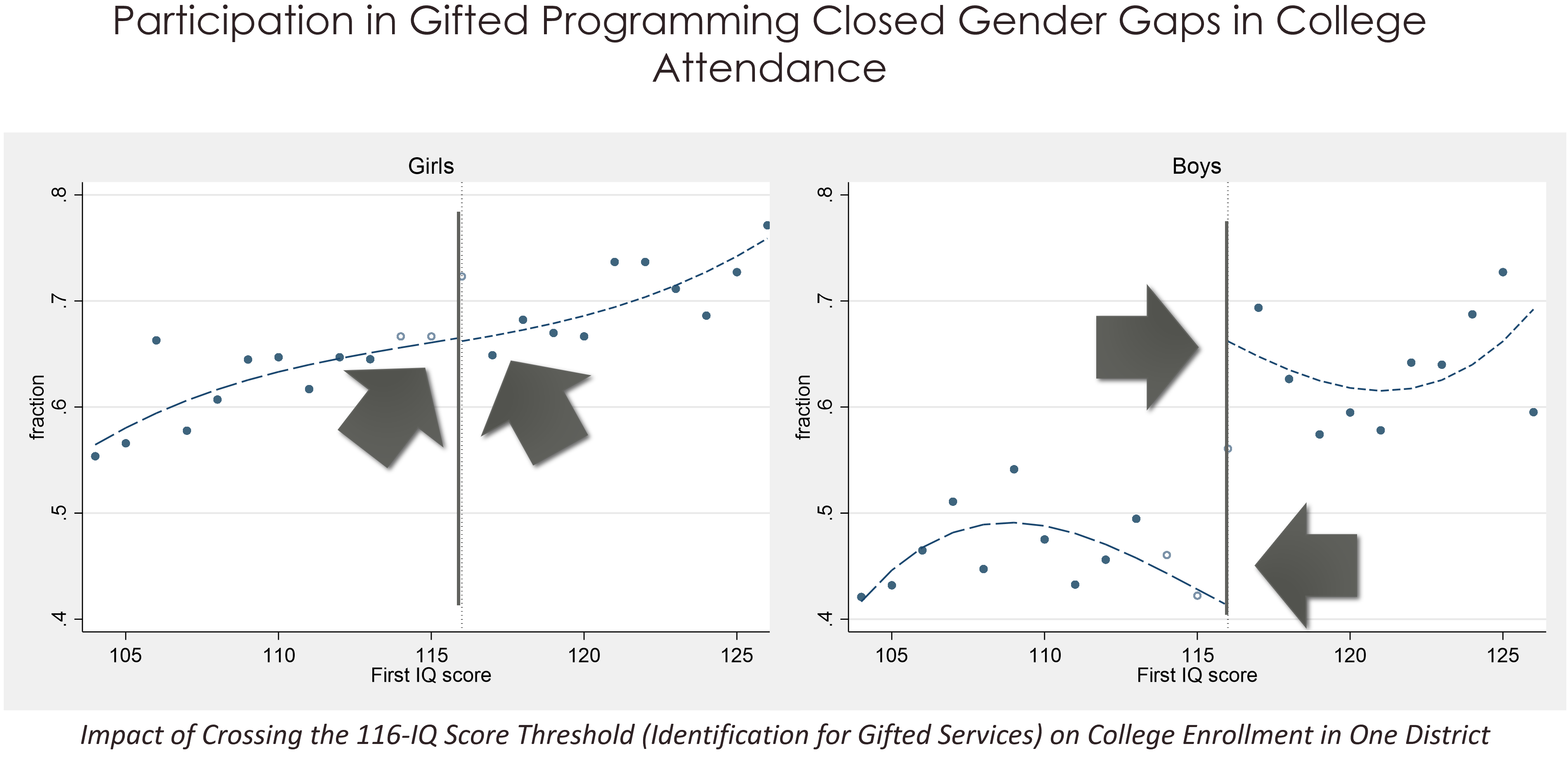Our three longer-term impact studies of gifted and talented students in a Florida district focus on the longer-term impacts of gifted status on outcomes that are closely aligned to the goals of GT programs and that incorporate a multi-dimensional skills perspective. Two of these projects focus on underserved students (English learners (ELs) and free/reduced-price lunch (FRL) participants) who can qualify for gifted status in Florida with an IQ score of 116 points or higher. The third study focuses on both underserved and non-underserved students, using comparisons between one county, where mathematically talented students can access a unique accelerated math curriculum in grades 6-8 (available in all middle schools) that includes high school level algebra and geometry, to those in another county, where a standard “honors track” is available in many middle schools.
Our main outcomes include information from the National Student Clearinghouse (NSC) on the colleges and universities attended by students. Evaluating the effects of gifted identification on whether a student attends a 4-year college and on the quality of the college he or she attends contributes to a broader understanding of the impact of gifted programs on higher ability students from diverse backgrounds. Analyzing college-going and college selectivity for gifted students who can or cannot access a multi-year accelerated math curriculum provides new insights into the design of programs for middle school students, while also addressing the question of whether gifted programming is more effective when combined with accelerated exposure to more advanced materials (Assouline & Lupkowski-Shoplik, 2011). Each study also analyzes intermediate outcomes to isolate the potential mechanisms that drive any longer-run impacts. These include high school course taking, GPA, and performance on Advanced Placement (AP) exams. Because AP tests are designed to measure college-level knowledge for a wide variety of subjects, we can use them to construct outcome measures that are aligned with the broad goals of gifted education. For example, in analyses that include all underserved gifted students, we are testing whether being identified as gifted makes students more likely to learn any subject in greater depth than they would in the standard high-school curriculum. When studying the impact of subject acceleration for mathematically gifted students, we focus on AP exams in math. Finally, we are also examining two behavioral measures that capture lack of engagement in school: unexcused absences and disciplinary referrals.

For the most part, our results find large positive effects on college entry for underserved boys, but not for girls, and we find no evidence of treatment effect heterogeneity along other dimensions. We also find impacts on several potential mechanisms that are limited to boys. In particular, gifted status appears to push boys into more advanced coursework in math and language arts in both middle and high school. Boys also see an increase in their math GPA as a result of obtaining gifted status. For girls, the effects are limited to enrolling in somewhat more advanced language arts courses in middle school. Interestingly, there is a gender gap in both college enrollment rates and these intermediate outcomes among students near the gifted IQ thresholds – which is consistent with under-achievement by boys relative to their ability. Crossing the eligibility threshold (IQ score of 116) roughly closes this gap. We interpret this evidence as suggesting that gifted program participation induced underserved, high-ability boys to pursue an academic track better aligned with their potential – especially for those with high ability in math – and to enroll in college after graduation.
We also find suggestive evidence of a positive effect on college quality and persistence for boys, but the estimates are imprecise because they are based on the subset of cohorts that we could follow for at least two years past high school graduation. We have now performed this analysis using our larger sample, but the effects on quality and persistence continue to be imprecise. One potential issue is that some of our college enrollment outcomes may be mismeasured due to students’ dual enrollment in the local community college while still in high school. We plan to explore this issue in identifying those dual enrollment courses.